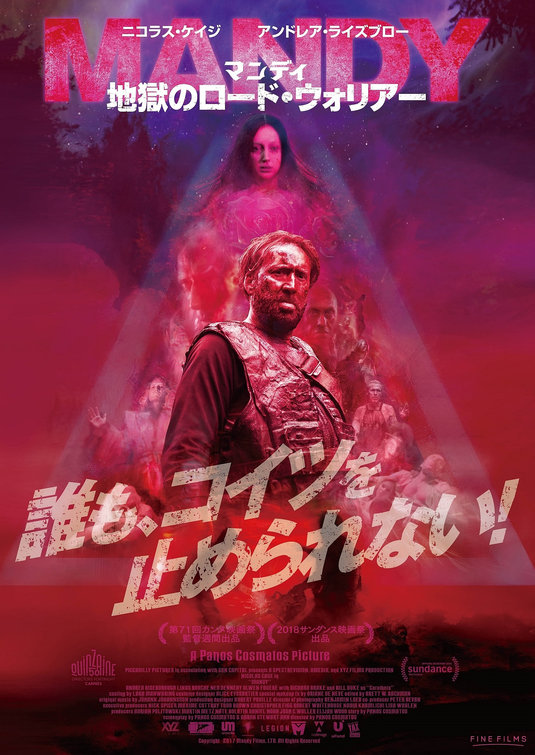
At best and at worst, movies serve as emotional prisms. Movies aren’t just stories, aren’t just artwork, aren’t just moving pictures with music. Movies are the baggage that we bring to them. A movie like MANDY, all baroque flourishes and deliberate broad strokes, is particularly revealing in the way it refracts its audience, splitting light in all sorts of directions. MANDY has been rapturously received by several. That’s an authentic reaction. But MANDY may not work for others, and they’re not wrong either. They can’t be. I’ve seen MANDY three times now and while I fall far more on the side of affection for it, even still, I’ve felt a little differently about it each time. How can that be? Some movies — maybe all — have a lot to do with the people watching them. A person’s reaction to a movie can and will vary, depending on whichever self shows up at in front of the screen on that day, at that time, in that exact moment.
The plot of MANDY is easily described, by design. A lumberjack named Red, when not working, lives a hermetic but harmonious existence with his girlfriend Mandy in the mountains of eastern California, an existence that is upended by the arrival of a would-be prophet named Jeremiah Sand, who becomes fascinated with Mandy and orders his acolytes to abduct her. When she rejects him, Sand murders Mandy horribly and grotesquely in full view of Red, which sets Red off on the bloody road to revenge.
With a storyline that elemental, the specifics are all in the presentation. That’s why the mileage varies so wildly.
The movie announces itself more like a 1970s rock record than a movie. In crimson, uncredited words appear on the screen, underscored by an electric-guitar overture: “When I die Bury me deep Lay two speakers at my feet Wrap some headphones Around my head And rock and roll me When I’m dead.” It took a little digging for me to find the source of that quote. Sure sounds like something a frontman might yell out to an arena while looking out at the tiny flames of a dozen-thousand cigarette lighters. But that’s not the source. Those were the last words of a murderer, just before he was executed for his crimes. In reality, in Texas, in 2005. So this florid, subjective, surreal film is grounded in a very distinct, very bleak place, though that would surely be lost on at least 99% of any audience, as it was on me.
The music opening MANDY is “Starless” by King Crimson, again placing this film musically and tonally somewhere between prog-rock and heavy metal. The visual world of MANDY opens as Red is completing a logging job, with a notably processed shot of a thick tree falling as Red turns from it to head to the helicopter airlifting him off-site. Red is a smoker. He tosses his cigarette away. He wears a baseball jersey with the number 44 on it. Shirts are important in this film. Inside the helicopter, a colleague offers Red a flask, but Red waves it away. Immediately that’s a detail that registers.
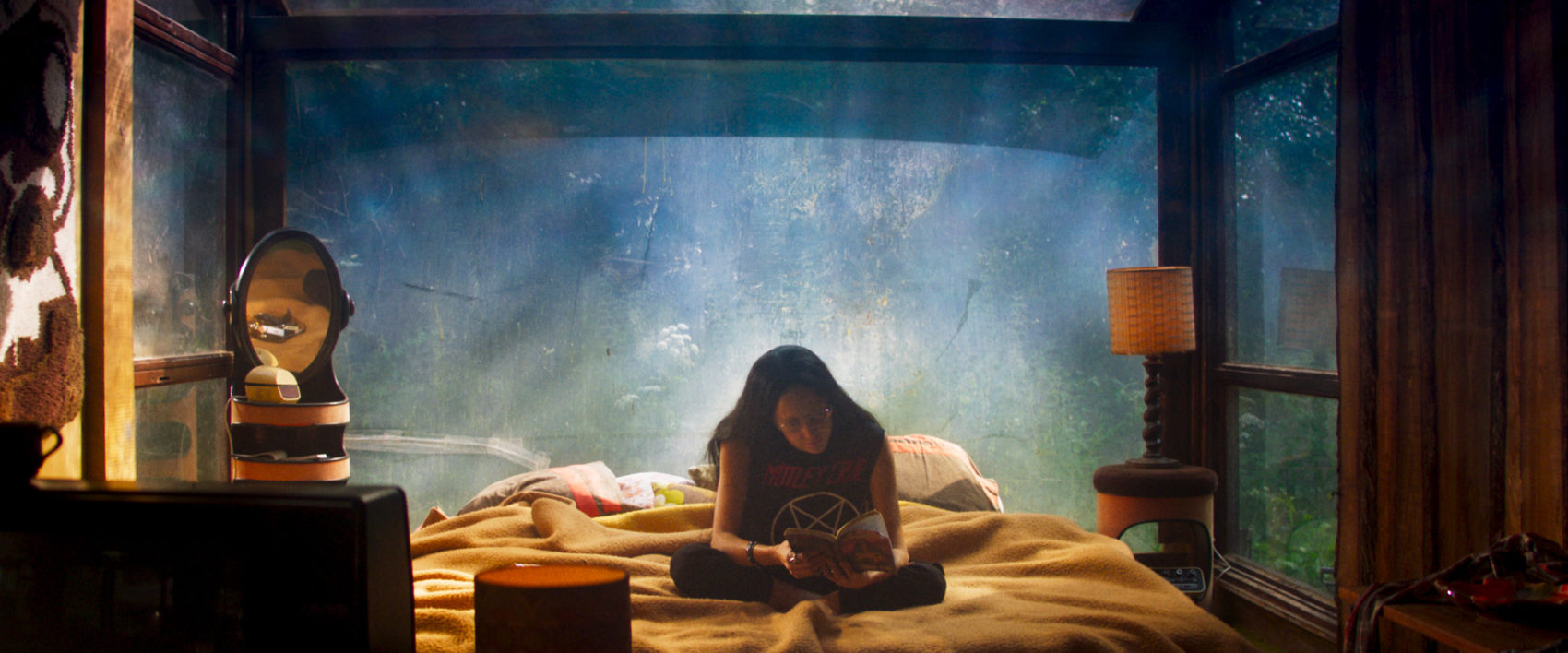
Mandy is introduced lips-first, as she takes a smoke. Her face is introduced alongside her painted artwork, currently in process. Red arrives home, turning off a radio playing a Reagan speech which pins the timeframe of this story in the early 1980s. A stylized, sparkling blue title card announces this is happening around the Shadow Mountains, ‘circa 1983.’ The Shadow Mountains are a real place which may sound like the name of a prog-rock or metal track title. When he enters the house, Red announces himself to Mandy with a knock-knock joke with no real punchline. He’s played by Nicolas Cage, instantly recognizable as such. Mandy is played by Andrea Riseborough, less world-famous, sure, but still a prominent talent, who here is unrecognizable by contrast. She shows him the painting she’s been working on, and he’s impressed, though not particularly articulate about it.
The scene shifts to the middle of the night, with a bluish glow reminiscent of the scene-setting title card. Red and Mandy lie together in bed, not sexually but intimately, talking of space and of the Marvel character Galactus. The cinematography by Benjamin Loeb, already flush with color, takes on a new glow here — the movie is already parting from reality long before any of the characters partake in mind-altering substances. In the morning, Mandy wakes to the sound of an unidentifiable animal. She goes out to the woods alone, where she finds a dead fawn. Was this the source of the sound, or the result of it? Either way, Mandy sheds a tear. That night, she shares with Red a troubling story about starlings from her childhood. Between small birds and small deer, Mandy appears to empathize with the peaceful creatures of the world. She identifies with the animals who are often prey. At the end of her story, Red says only, “Oh baby, come here,” and embraces her. It’s notable that what little personal background we get of these characters comes all on the side of Mandy. We don’t know anything of Red’s past, save one detail from which we can infer plenty.
Mandy goes for a walk and a smoke along a mountain road, which is where she encounters the van driven by Jeremiah Sand’s Children Of The New Dawn. The scene is filtered red, and everyone inside the van appears to be varying degrees of stoned. The heretofore idyllic score by Jóhann Jóhannsson turns malevolent. The screen freezes on Mandy’s face as she passes the van and her eyes meet Sand’s, in a stylish flourish that could just as well have come from an early Tobe Hooper film.
The narrative is hijacked here by the movie’s villain, a la PSYCHO or MANHUNTER, and not just the narrative, but the filmmaking style itself. In an interview with Rue Morgue, MANDY director Panos Cosmatos reveals Linus Roache was not the first choice for Sand. In fact, he was thinking of Nicolas Cage. For sure, Jeremiah Sand is a role anyone can imagine Cage playing, with relish. Cage would not be the obvious choice for a taciturn character like Red, and likewise, Linus Roache, a fine actor, is not who any genre fan would have expected to play a deranged cult leader. In some ways, his performance is the boldest and most inarguably creditable aspect of the film. Roache invests the role with exactly the level of histrionic high-low ferociousness that Cage would have done, and he’s excellent.
Sand sends his henchmen after Mandy. One of them, Mother Marlene, played by Irish stage actress Olwen Fouéré, first approaches Mandy at the convenience store where she works, posing as a friendly customer. Mandy mentions she lives “up by Crystal Lake,” the naming of which cannot be a coincidence in a film like this one. Meanwhile, another henchman, Brother Swan (also played by an Irish actor little known to American audiences, Ned Dennehy), uses an instrument called the Horn Of Abraxas to summon up fearsome figures from deep in the woods, who resemble something that could have resulted from a collaboration between George Miller and Clive Barker. These men are the Black Skulls, and the first time I saw this movie, it didn’t even occur to me that these characters WEREN’T supernatural in origin, which I think is probably the point. If MANDY is a film that exists apart from reality as we perceive it, the Black Skulls, whose closest cinematic precedents are the Gimp from PULP FICTION and the Plague in HOBO WITH A SHOTGUN, feel like they exist from a reality even apart from MANDY, if that makes sense. They arrive by sound first, monstrous, and pull up on motorcycles and ATVs. Their faces are masked in leather and they snarl inaudibly. Brother Swan is visibly terrified by them. The Black Skulls accept a human sacrifice, taking one of Sand’s more expendable followers with them for undisclosed purposes, before proceeding to siege and befoul Mandy and Red’s sanctuary of a home.
The abduction is a horror-movie scene, and a violation of the sanctity of the three-act structure to boot. The movie’s inciting incident comes at the midpoint, if not precisely then intuitively. This disregard for convention, the kind of convention that is traditionally comforting, I think is the main reason some people are turned off to MANDY. Others call it pretentious, or predictable, and while I can’t disagree, I perceive a sincerity in the making of this film that allows me to buy into it whole-heartedly.
From here, the film takes a hyperdrive warp into psychedelia, as Mother Marlene “prepares” Mandy for Sand by dosing her with a sting from a [noticeably fake-looking] giant wasp. As Mandy reels from the intoxicating effect, one of the film’s most indelible, disturbing, hilarious, and temporarily gratifying scenes transpires, as Sand plays Mandy a track from his terrible folk album (where he sings lyrics extolling his own greatness) and then literally exposes himself to her. It’s disgusting and weird and upsetting, which is why it’s such a hero moment when Mandy laughs in his face, spurning his music and his speeches and his dick.
The victory is short-lived, because that’s when Sand and his followers burn Mandy alive, with Red bound and gagged and forced to watch the entire destruction of the love of his life. This is an odd moment to bring up the matter of costuming, but I’d like to point out that in Mandy’s final scene, she’s wearing Red’s “44” jersey, while Red is wearing a black-and-red jersey (not for nothing, the same colors as Red’s truck), emblazoned with the face of a tiger. Again, these small details register. Swan hands Sand the “Tainted Blade of the Pale Night” — these people have florid names for all of their belongings — and Sand stabs Red in the gut, vowing he and Mandy will see “the cleansing power of fire.” The viewer realizes we’ve already seen Mandy for the last time, since the Children of the New Dawn carry her out of the house inside a burlap sack, which they string up and set ablaze. The camera hones in on Red’s tormented face, all the more painful because Mandy has already been turned into an inanimate object — neither Red nor we the viewer get a chance to say goodbye.
Again, mileage may vary, but for me this scene works as intended, not least because of the force of Jóhann Jóhannsson’s score — sadly, his last — which in this moment is equally sad and horrifying. If MANDY is a film that intentionally aligns itself with music, it’s impossible to overstate the heavy lifting this film’s score provides. Also interesting is how Cosmatos and Loeb handle the aftermath. The music subsides, and the lighting goes more “natural” and less apocalyptic. Sand and his people get into their cars and drive away, leaving Red tied up and bleeding, but alive. To me, this is how trauma feels, the way the most mundane observations of sight and sound register after one’s entire world has been altered forever.
Red frees himself and watches as the wind blows away the ashes which are all that remain of Mandy. He staggers inside, clad only in his tiger shirt and tighty-whities, and sees that the TV is still on. It’s playing what has already become MANDY‘s most meme-worthy (and in some quarters, maligned) element, the “Cheddar Goblin” commercial, for which Cosmatos recruited Casper Kelly, the absurdist mind behind “Too Many Cooks.”

Red mutters, “Cheddar Goblin,” and lies down, passing out. In a weird way, this was a relatable moment to me on par with the moment in this year’s HEREDITARY, the aftermath of the accident in which Peter realizes what’s happened to his sister Charlie and is stunned into catatonia. I’ve been there. I hope you haven’t been.
One more time, the very substance of MANDY alters as Red has a vision of Mandy in death — presented in a brief animated segment, which is something I don’t think we’ve seen since KILL BILL. And then Red wakes up. He grabs a bottle of vodka and still bleeding, storms into the bathroom, screaming gutturally in grief and drinking. He sits down on the toilet, still wearing only that tiger shirt and his underwear, and cries. This, to me, is the heart of the film. As I said up top, any one movie can be a lot of things to a lot of people. To me, MANDY is a story about a relapse.
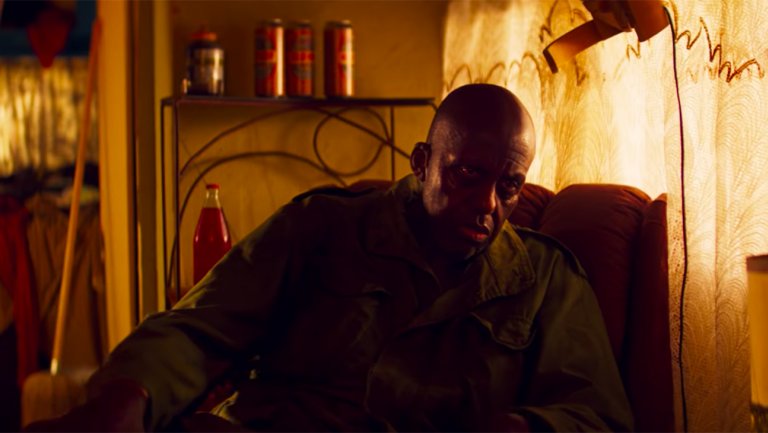
Red goes to the trailer of his friend Caruthers, who is played by the estimable Bill Duke, an under-heralded filmmaker and creative force best known as a character actor, who I revere for his work in PREDATOR. Red tells Caruthers what happened, and says he’s come “for The Reaper.” All of this is bizarrely exciting because it suggests some odd backstory we can only invent for ourselves — how does Red know Caruthers? Why is Caruthers holding a weapon for Red? Why do these guys name their weapons? (And does that make them too different from the Children of the New Dawn?)
Another highly-stylized chapter heading comes on screen — Mandy’s name, in the form of red veiny lines that almost appear to be transforming the name into a beating heart. It’s also the movie’s title — here now, over an hour into the film, only now does the title screen appear. Red speeds out in his truck in search of the Black Skulls. It’s telling to note that what was for an hour’s time a dreamy romantic reverie and a phantasmagoric horror show has now transmogrified into MANDY in its most crowd-pleasing form, a full-on action-revenge picture, with action-film icon Bill Duke serving as its herald.
As Red tears through the Black Skulls in a fit of fury and blood, he cracks one-liners and absurdist Cage-isms (“You’re a vicious snowflake!”) and snorts some of the coke they’ve left lying around their lair. Again, this is a relapse. The violence is relapse. That it’s the movie’s most entertaining mode is what makes it disturbing — again, to me. There’s a sort of release in relapse. It’s thrilling to rip shit up, even if what you’re ripping up is your own life, or someone else’s. It’s clear by now that Red has been holding back — declining to drink, committing no violence worse than cutting down trees, and choosing instead to love and live with Mandy — but the loss of her has given him permission to unleash whatever fury he’d been holding back. If this were an Oscar-minded drama about the struggles of alcoholism, we would not want to see Red drink again, but since it’s framed as a revenge picture, we crave the relapse as much as he does. And that’s upsetting. It’s upsetting in the pleasure of it.
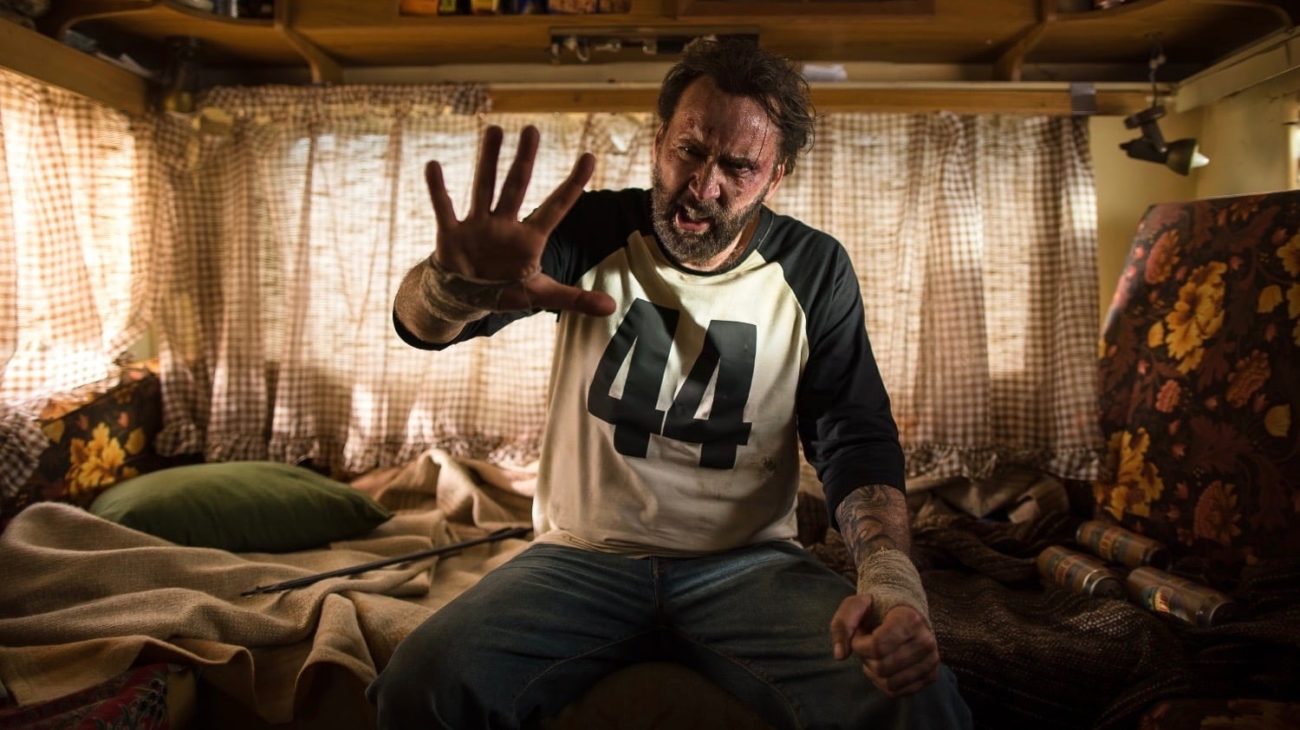
Also intriguing is how Red is wearing the “44” jersey in the scenes where he tears through the Black Skulls. The last time we saw that shirt was on Mandy. Really, this is the movie’s least noticeable but most notable break from “reality” — how is Red wearing a shirt Mandy had on when she died? It makes no sense, unless you maybe want to consider that Red is now Mandy’s avatar, acting out the physical equivalent of the laughter she’d leveled at Sand. In other words, the only sense it makes is movie-sense.
After killing all the Black Skulls, Red makes his way to their drug supplier, The Chemist (Tom-Petty-esque character actor Richard Brake), whose warehouse includes a tiger in a cage. The Chemist introduces the tiger as “Lizzie,” and as Red glares at him, covered in the blood of dead enemies, The Chemist seems to get the message, and sets Lizzie free. (Remember Red’s tiger jersey?) This particular symbolism may appear to be peripheral, but it isn’t too subtle.
Red continues to travel north, and when he stops to rest, he has another animated dream, this time of a nude Mandy caring for a wounded and bloody half-tiger/half-man. She reaches inside his wounds and pulls out a glowing green diamond, and then Red wakes up. He continues on to his final battles, all of which transpire in a canyon which absolutely could have doubled for a FURY ROAD set. The most gore is yet to come. Red splits Brother Swan’s head apart to interrupt him when he references the quote, “Better to burn out than to fade away” (guess Red isn’t a Neil Young fan), engages in a duel of oversized chainsaws with Sand’s most formidable henchman that ends as you might expect, enters Sand’s triangular temple and beheads Mother Marlene, and crushes Sand’s skull with his bare hands. The last two victims both offer Red sex in an attempt to persuade him to spare their lives, but Red has no interest in anything but destruction. After killing them all, Red burns the entire place down.
Even during my first screening of MANDY, all this climactic violence felt inevitable. Though it’s never uninteresting to watch, not remotely!, the movie is long since out of surprises. That has significance. From that first absurdist knock-knock joke to Mandy’s harrowing story about the starlings, all of the mystery, all of the reward, was in the relationship between Red and Mandy. Once that’s destroyed, it’s not hard to predict where the movie will go. Without love, without hope, there’s nothing but death. In the final moment of the movie, as Red drives away from the battlefield still caked in blood so thick his skin itself appears red(!), he first flashes back to the very first time his eyes met Mandy’s — the film’s sole flashback — and then he has a vision of Mandy, looking at him from the passenger seat. She’s holding a cigarette and smiling. Many viewers will look at this moment as a last visit with an avenged loved one, a bittersweet moment, such as we get in films like THE CROW. That’s what I’d like to see. That’s not what I see.
In the film’s final moment, Red turns to his vision of Mandy and bares his teeth in something approximating a smile, but in truth he’s no longer capable. She’s gone. His hope is gone. The end credits roll without music, possibly only the first or second time the movie has been without it. There’s nothing left for Red. It’s over. This is why you fear the relapse.
All of that said, at the very end of the credits, you can hear starlings chirping. And after the credits, the final image we see is a portrait of Red, as done by Mandy and left on her drawing table. She’s not gone, not completely. There’s something left. There always is.
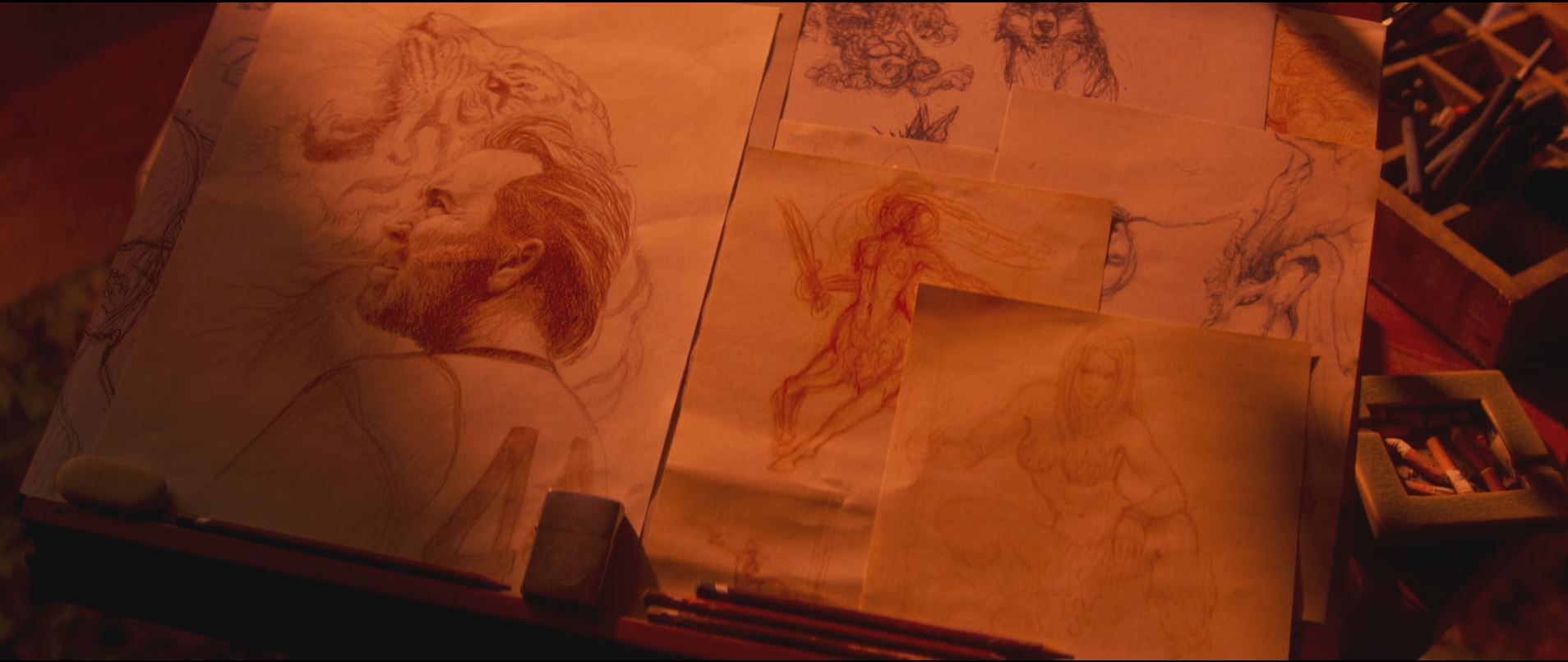
- [THE BIG QUESTION] WHAT’S YOUR FAVORITE FEMALE ENSEMBLE IN MOVIES? - July 22, 2016
- [IN THEATERS NOW] THE BOY (2016) - January 24, 2016
- Cult Movie Mania Releases Lucio Fulci Limited Edition VHS Sets - January 5, 2016
Tags: 31 flavors of horror, Aaron Stewart-Ahn, Andrea Riseborough, Benjamin Loeb, Bill Duke, Casper Kelly, Columns, Don Dohler, elijah wood, Hayley Saywell, Jóhann Jóhannsson, King Crimson, Linus Roache, Ned Dennehy, Nicolas Cage, Olwen Fouéré, Opinions, Panos Cosmatos, Richard Brake, Sam Louwyck

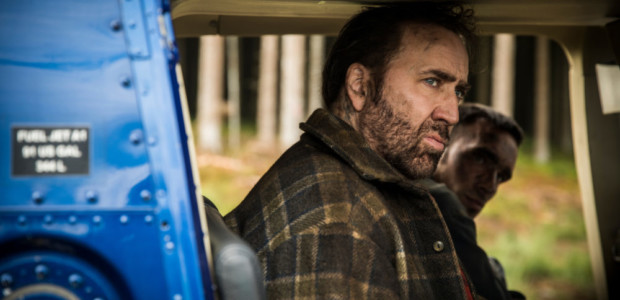




Love your think piece – obviously much more than a review. One minor comment, if I may, you mentioned there’s only one flashback in the film, but there are actually a couple, including when Red first met Mandy – we see them at a party getting to know one another, and at some campfire tryst they had where Mandy walks towards him naked, out of a lake. And now a question: what do you think is the significance of Mandy’s scar. or where she got it? Again, really terrific writing and insight.